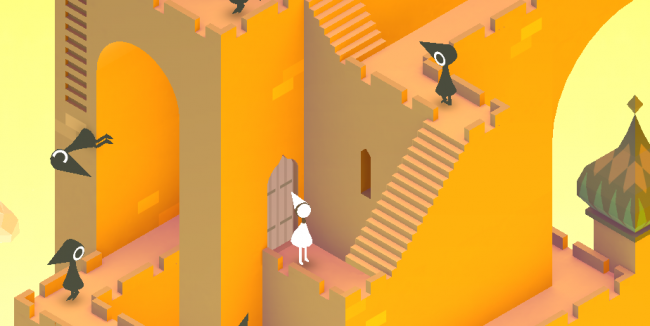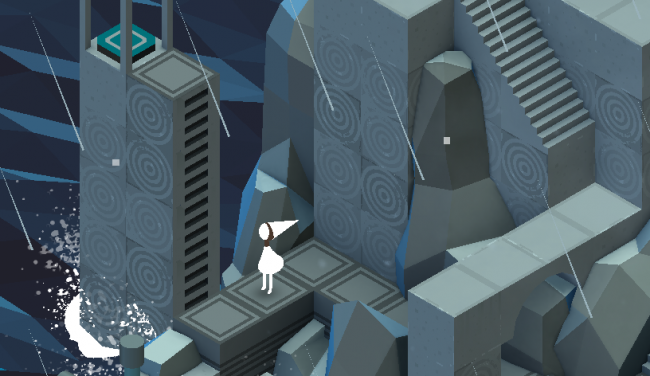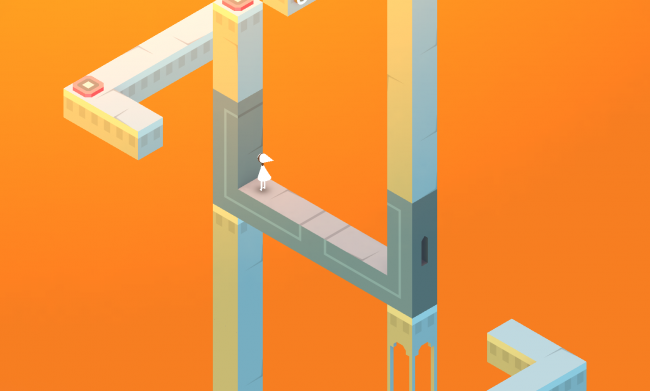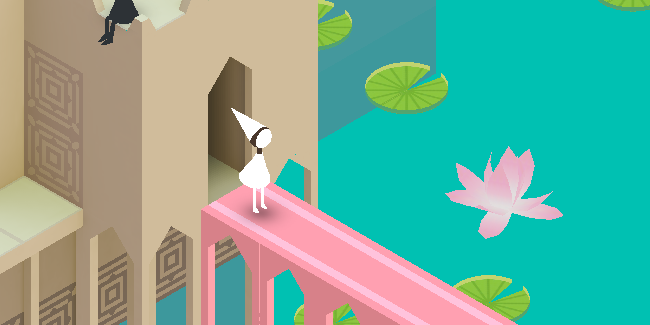- Wondering how to get Monopoly GO! free rolls? Well, you’ve come to the right place. In this guide, we provide you with a bunch of tips and tricks to get some free rolls for the hit new mobile game. We’ll …
Best Roblox Horror Games to Play Right Now – Updated Weekly
By Adele Wilson
Our Best Roblox Horror Games guide features the scariest and most creative experiences to play right now on the platform!The BEST Roblox Games of The Week – Games You Need To Play!
By Sho Roberts
Our feature shares our pick for the Best Roblox Games of the week! With our feature, we guarantee you'll find something new to play!Type Soul Clan Rarity Guide – All Legendary And Common Clans Listed!
By Nathan Ball
Wondering what your odds of rolling a particular Clan are? Wonder no more, with my handy Type Soul Clan Rarity guide.
Monument Valley Review
Monument Valley is a work of art. Its intricate, delicately crafted levels are masterpieces that exceed their M.C. Escher inspirations. Where Escher designed 2D representations of impossible-yet-operational architecture, Monument Valley opens that idea up to a 3D world that must withstand scrutiny from every angle as well as direct manipulation by the viewer. Paths that appear elevated and inaccessible from one direction become stepping stones when rotated. Supporting archways are actually stairs once flipped. Every part of the towering structures fit together like crisp, fresh out of the box jigsaw pieces, and yet they can be turned and twisted to create dozens of new pictures that are just as unified and smooth.

Your interaction with these impossible structures is twofold: at times, you will manipulate them directly, turning cranks or sliding pieces of the architecture to achieve tactile, immediate changes. Other restructurings require characters within the towers themselves to step on buttons to elicit responses, ranging from doors opening to entire sections of the world moving. All of these actions have one goal: get our protagonist, Ida, to the platform at the end of the stage.

A beautiful journey through an impossible world
Monument Valley is a work of art. Its intricate, delicately crafted levels are masterpieces that exceed their M.C. Escher inspirations. Where Escher designed 2D representations of impossible-yet-operational architecture, Monument Valley opens that idea up to a 3D world that must withstand scrutiny from every angle as well as direct manipulation by the viewer. Paths that appear elevated and inaccessible from one direction become stepping stones when rotated. Supporting archways are actually stairs once flipped. Every part of the towering structures fit together like crisp, fresh out of the box jigsaw pieces, and yet they can be turned and twisted to create dozens of new pictures that are just as unified and smooth.

Your interaction with these impossible structures is twofold: at times, you will manipulate them directly, turning cranks or sliding pieces of the architecture to achieve tactile, immediate changes. Other restructurings require characters within the towers themselves to step on buttons to elicit responses, ranging from doors opening to entire sections of the world moving. All of these actions have one goal: get our protagonist, Ida, to the platform at the end of the stage.
Ida’s journey through the puzzling towers of Monument Valley is shrouded in mystery, with only vague hints to her purpose appearing in the stage titles and brief interactions with a ghost that seems to recognize her. By the end of the game, the story of Ida and this world are clearer (albeit not without questions). Before that, we know only that she wants to reach the geometric pedestals adorning the end of each stage, and to place different shapes on each before progressing to the next monument.

This progress is accomplished by dictating where Ida walks or climbs, and through all the changes you must implement to open up new, intertwining pathways. Many of these changes are reminiscent of the world-turning in Fez: sometimes you will find an area that was previously hidden by a wall, while at others you’ll actually move two distant points closer together. Unlike Fez, you don’t have a specific, always-accessible ability at hand. Your interaction with the world is determined by which pieces of the tower are movable, and what tools or obstacles—such as the friendly Totem or roving Crow People—are currently present.
This creates a variety of levels that are all similar but also vastly different. One of the most impressive aspects of Monument Valley is this cohesive yet wildly varying world. Although every stage features a series of vertically-aligned, logically impossible structures that must be traversed, each stands out as a unique and memorable entity that introduces not only different settings but new gameplay rules.

This is especially true in later stages, as the story is implemented more directly and additional liberties are taken with design. Chapter VIII, “The Box,” is the most striking example of this, presenting players with an enclosed cube without any obvious pathways or even Ida herself, and which must be opened before our silent protagonist can begin climbing. Unfortunately, this enigmatic cube is one of the few examples of tricky puzzle-solving: most of Ida’s travels follow linear paths that are obvious from the start, even when eclipsed by impossible geometry.
This lack of difficulty is part of Monument Valley‘s only downside: it splits its time too evenly, spreading itself thin across genres. It’s too short and too easy to be a fully satisfying puzzle game. As an atmospheric experience akin to a game like Kentucky Route Zero, it lacks enough story development and accessible lore to be a totally fleshed out world beyond its game pieces. This leaves us with a game that tiptoes the line directly between puzzle-solving and environment-absorbing without leaning far enough into one or the other.

Its focus is obviously the beautiful, perfectly constructed levels that double as the backdrop for both its puzzles and story, but without enough of one of these other features, Monument Valley often feels more like a painting than a plaything.
What this really means is simply: we want more. Monument Valley is a technical and aesthetic accomplishment that rewards players with beauty, originality, and grace at every turn of its ten stages. Its world is illogical yet understandable, simple but complex. Its puzzles will rarely baffle, but are capable of surprise. Completing Ida’s journey is satisfying, but leaves a hole: we can only hope for Stage XI, “In which our emptiness is filled.”

The good

The bad
More articles...
Monopoly GO! Free Rolls – Links For Free Dice
By Glen Fox
Wondering how to get Monopoly GO! free rolls? Well, you’ve come to the right place. In this guide, we provide you with a bunch of tips and tricks to get some free rolls for the hit new mobile game. We’ll …Best Roblox Horror Games to Play Right Now – Updated Weekly
By Adele Wilson
Our Best Roblox Horror Games guide features the scariest and most creative experiences to play right now on the platform!The BEST Roblox Games of The Week – Games You Need To Play!
By Sho Roberts
Our feature shares our pick for the Best Roblox Games of the week! With our feature, we guarantee you'll find something new to play!Type Soul Clan Rarity Guide – All Legendary And Common Clans Listed!
By Nathan Ball
Wondering what your odds of rolling a particular Clan are? Wonder no more, with my handy Type Soul Clan Rarity guide.







